Blogs
Engineer of the Enchanted Forest: Jangarh Singh Shyam
Shubhasree Purkayastha
Learn more about Jangarh Singh Shyam, a pioneering artist who inspired the Gond-Pardhan school of art and inaugurated the Jangarh Kalam, an artistic style named after him!
“For me, art and life are unceasing silences. Art penetrates life like an explosion of dance. I remember the forests (of my childhood). That memory makes me paint what I paint.” – Jangarh Singh Shyam
Jangarh Singh Shyam was a pioneering artist who inspired the Gond-Pardhan school of art and inaugurated the Jangarh Kalam, an artistic style named after him. Shyam was born into the Pardhan community of Madhya Pradesh, similar to the Gonds culturally but, in fact, a different vernacular group. The Pardhans were bards, who kept the Gondi way of life alive through mythmaking and music. However, with increasing modernisation and decreasing Gond patronage, they were forced to turn to animal husbandry, farming and other menial occupations in order to sustain themselves. In his native village of Patangarh, Shyam for instance, tended cows while doing a host of other odd jobs. He gained local recognition however, as something of a cultural prodigy, being an excellent flutist and painter. Villagers admired his draughtsmanship and invited him to decorate their homes and ceremonial venues with wall paintings. In 1981, a chance discovery of one such mural by a team of researchers from Bharat Bhavan – a multi-arts complex and museum in Bhopal – was to forever change Shyam’s life and open a new page in Indian art history.
Leading modernist artist and poet, J. Swaminathan, had an integral role to play in how Shyam’s artistic destiny unfolded. Under Swaminathan’s mentorship, he was invited to live, learn and grow as an artist in Bharat Bhavan. It is in Bhopal that Shyam’s art blossomed. He experimented in a variety of mediums and techniques and eventually created a distinctive style using dots and dashes, perhaps inspired by the Dighna wall paintings of Pardhan women-folk. This particular technique gave his works a rare force and energy – as if the forms in his paintings were alive and vibrating.

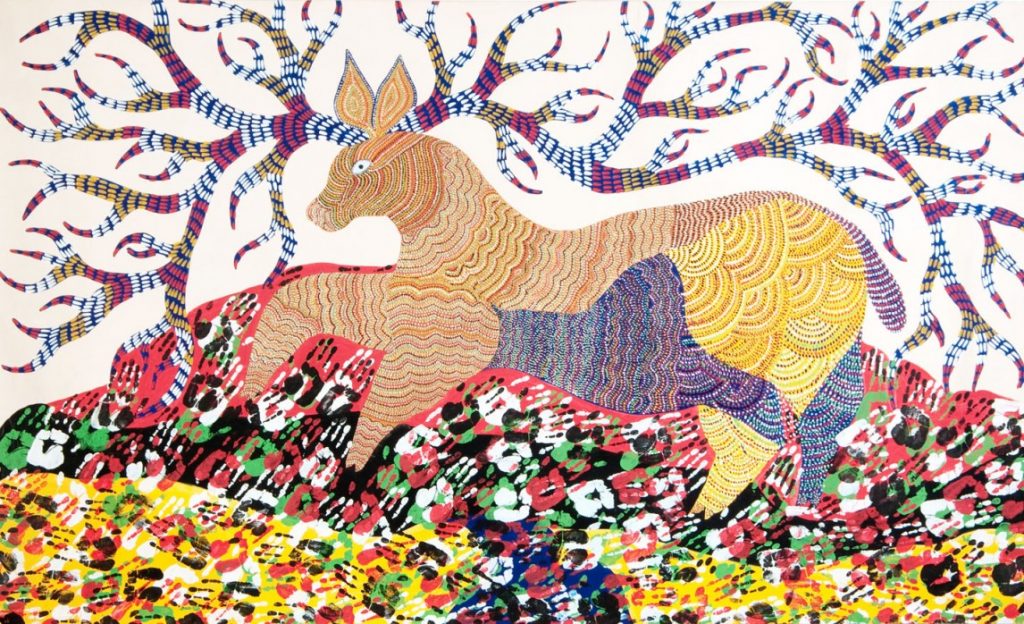
Portrait of a Barasingha, Jangarh Singh Shyam, Mid-1980s, Poster colours on paper
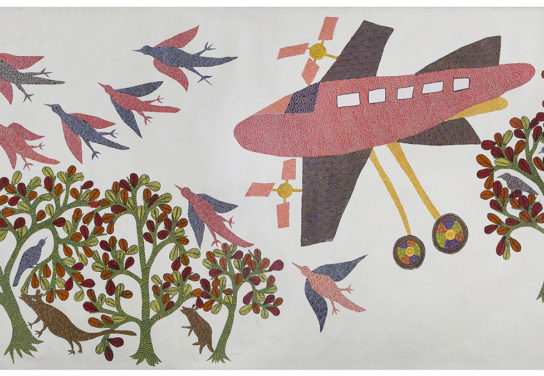
Ped, Chidiya Aur Hawaijahaz, Jangarh Singh Shyam, 1996, Acrylic on canvas
Shyam’s oeuvre took inspiration from both the rural and urban, the present and the past, the real and imagined. Along with reflecting his surroundings, both its familiar and unfamiliar aspects, he drew images that could only have been formed in his mind. Myths and fables, childhood stories, deities and demons – he put them all down on paper, giving them unique and original pictorial forms. Herein lies his greatest feat. Shyam’s art was conceptual and unprecedented. He wasn’t merely drawing from an older artistic tradition (like the Warli or the Mithila painters) but creating a whole new way of seeing. He was working with creatures and characters that the Pardhan community has lived with since the beginning – only he was making them come alive on paper, for the very first time.
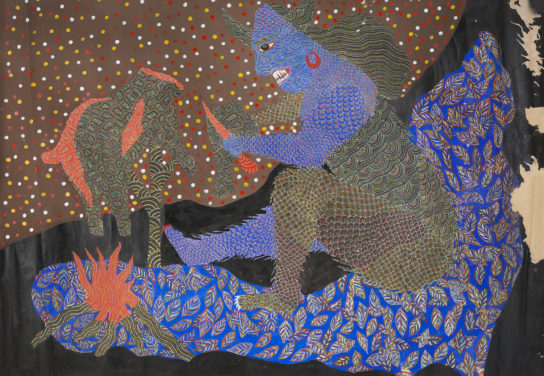
Duda Rakshas (demon in the forest), Jangarh Singh Shyam, Undated, Poster colours on paper
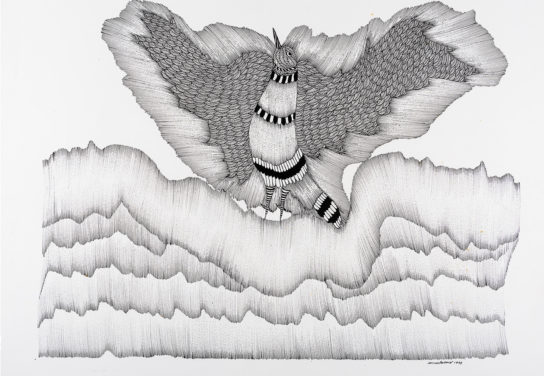
An episode from the Pardhan myth of creation, Jangarh Singh Shyam, 1997, Pen and ink on paper
Very often, Shyam’s response towards the forms he was creating was a fascinating mixture of fear, respect, awe and love. The deities that he believed in, the enchanting stories from his childhood, weren’t really meant to be given visual form, hadn’t been given any before he decided to put them down on wall and paper and canvas. He believed that they held an inherent power, as did their images. What if they got angry and caused him harm?
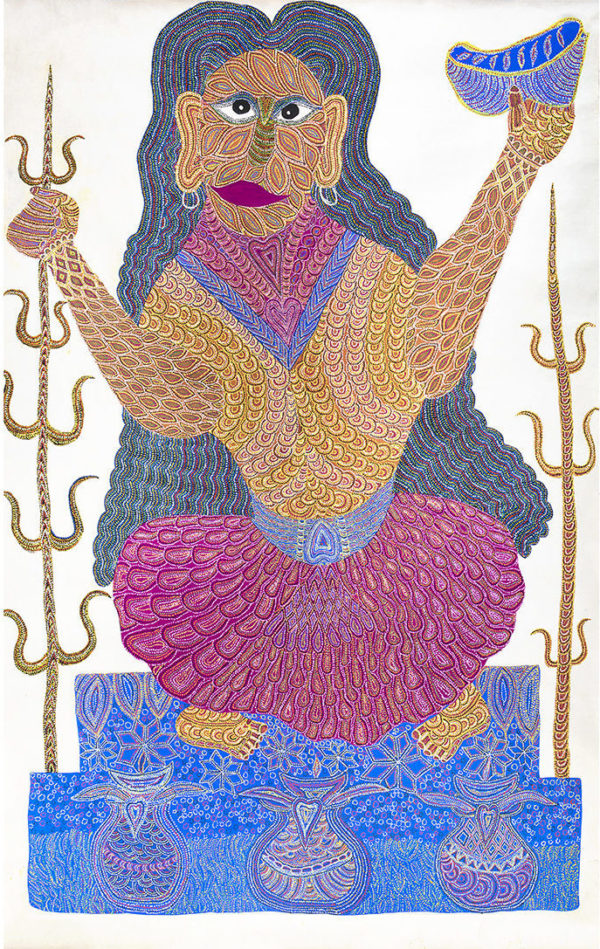
Phulwari Devi, Jangarh Singh Shyam, 1990s, Poster colours on paper
Shyam’s work existed in two realms – that of the visible world and that of the invisible magical forest that his ancestors had created for him.
His popularity soon spread beyond Madhya Pradesh to draw both national and international interest. His work was included in prestigious exhibitions such as the Magiciens de la Terre held in Centre Pompidou, Paris and Other Masters at the Crafts Museum, Delhi, among others. In 2001, on an international residency at the Mithila Museum, Japan, Shyam killed himself at the age of 39. It is widely believed that he was suffering from acute depression and loneliness, the management was heavily blamed and criticised for the episode (the museum initially refused to send his body back to India as it wasn’t ‘budgeted’ for), but the actual reasons for this death remain a mystery to this day.
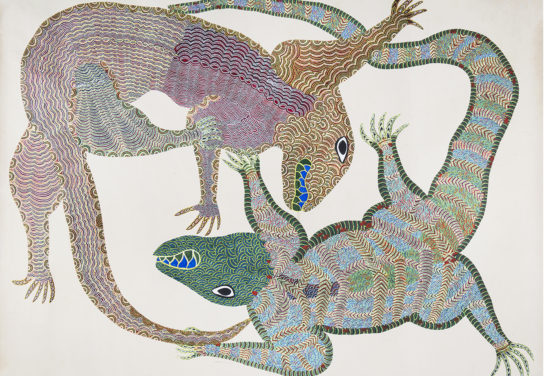
Foreplay of lizards, Jangarh Singh Shyam, 1993, Poster colours on paper
Shyam is survived by his wife and children who are also painters, and his life and work has inspired not only them but many from his community to carry on his legacy. Young boys from his village followed him to Bhopal, and Shyam generously taking them under his wing trained them in the style that he was incidentally creating. Many of those who apprenticed under him continue the tradition of the ‘Jangarh Kalam’ today, developing individual signatures within it.








